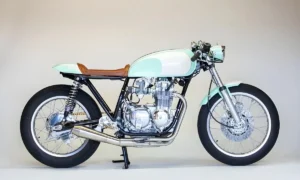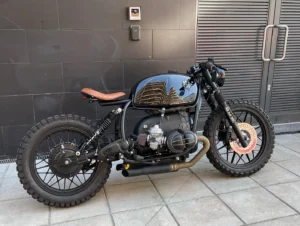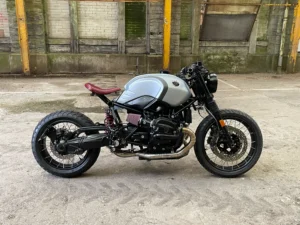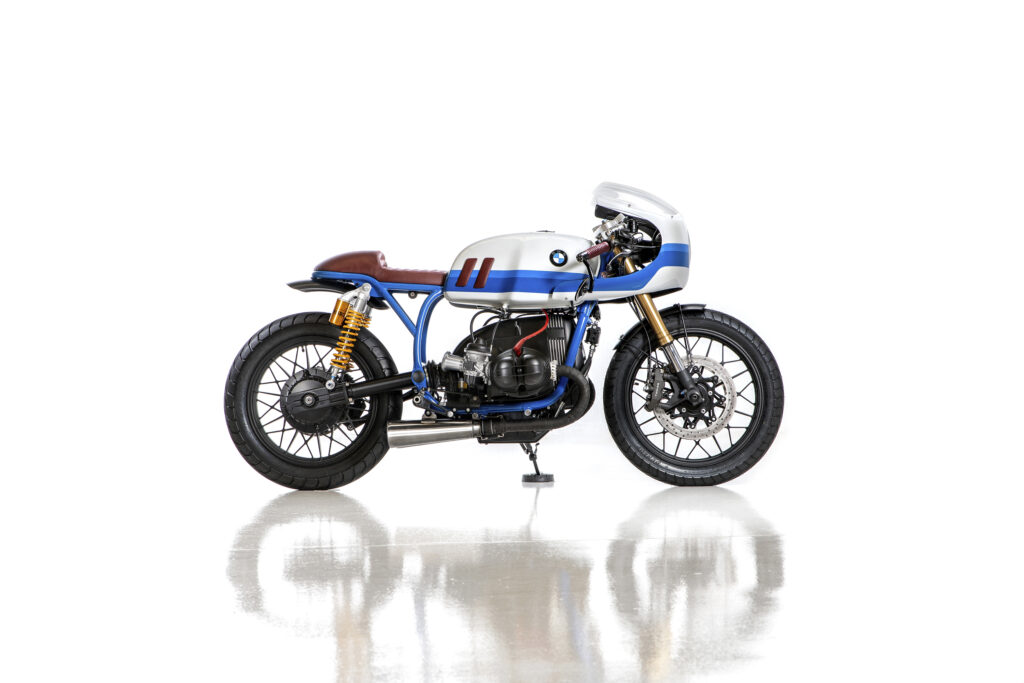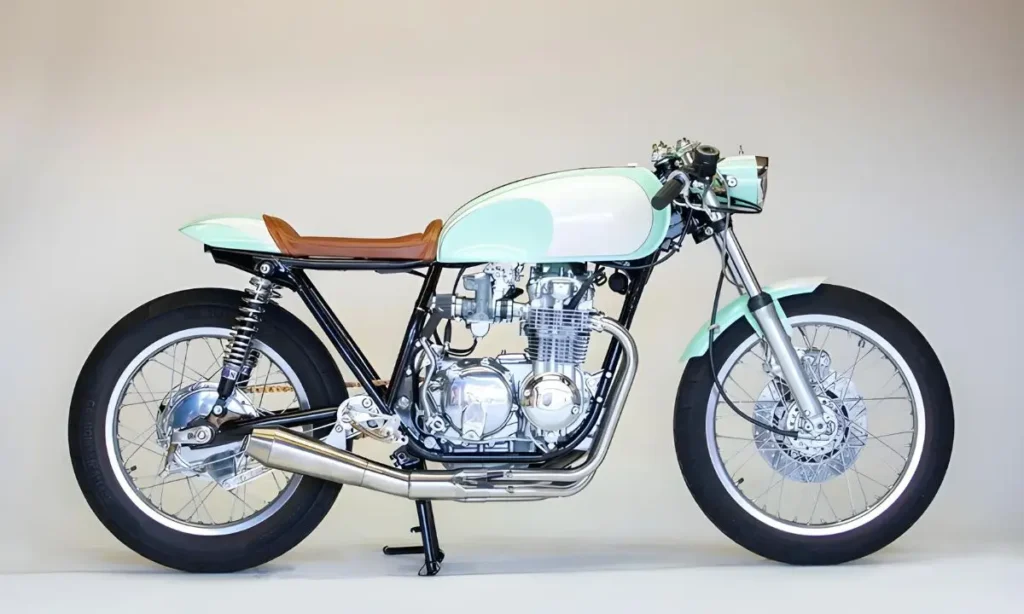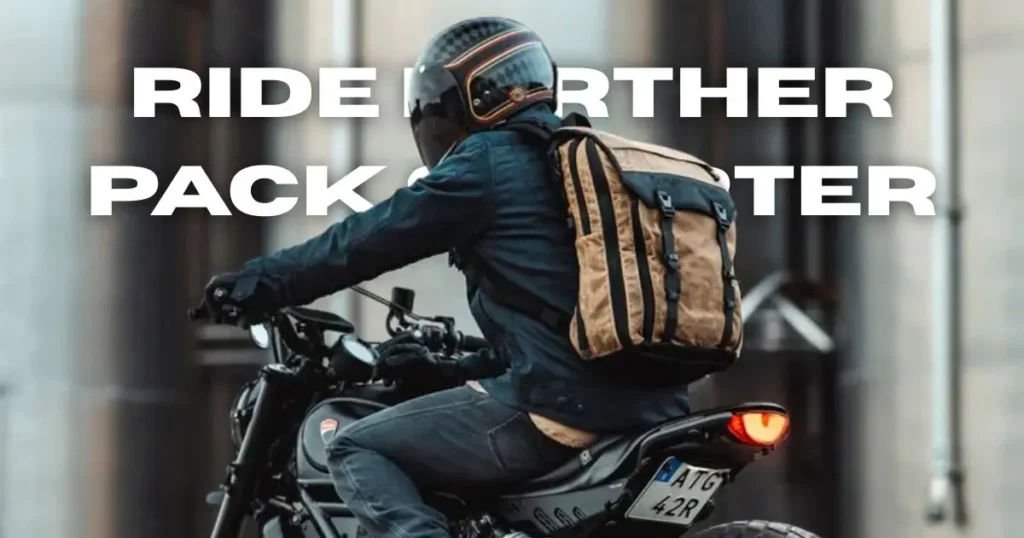Table of Contents
ToggleThe BMW K100 stands out as a motorcycle that changed the way people think about bikes. It arrived in the 1980s as something different. Bold. Reliable. Powerful. Riders quickly noticed its unique style and cutting-edge technology. This bike was not just for the roads. It set a new standard.
Many know the K100 for its smooth rides and dependable design. But it didn’t stop there. Builders and enthusiasts found ways to give it new life. Over time, the K100 moved from a top touring choice to a café racer favorite. That journey is what makes it legendary.
This article tells the story of the BMW K100. It shows how this bike became more than just a machine. It became a symbol of innovation and creativity. Let’s explore what made it so special.
Origins of the BMW K100
Development Background
In the late 1970s, BMW faced a challenge. The motorcycle market was changing fast. Competitors introduced newer, more powerful bikes. BMW knew their traditional boxer engines would not be enough for the future. They needed something fresh. Something bold.
This led to the creation of the K series. Engineers at BMW started designing a completely new bike. They focused on performance, reliability, and innovation. After years of work, the BMW K100 was born. It was launched in 1983 as a game-changer.
Technical Specifications
The K100 had a unique engine design. It came with a 987cc liquid-cooled inline-four engine. This was not common at the time. The engine was mounted longitudinally. This design helped balance the bike and made it run smoothly. The engine also included Bosch LE-Jetronic fuel injection. It improved fuel efficiency and gave better power delivery.
The shaft drive was another standout feature. Unlike chain drives, it needed less maintenance. Riders loved this because it made long rides easier. The K100’s frame was lightweight yet strong. It handled well on both highways and city roads.
Market Reception
The BMW K100 impressed riders when it was released. Many loved its smooth performance and innovative features. It was called the “Flying Brick” because of its unique engine shape. Riders appreciated its reliability and comfort during long rides. The K100 became a favorite for touring enthusiasts. It was clear BMW had created something special.
Let’s now explore how the K100 became a top choice for touring.
The K100’s Role in Touring
Touring Capabilities
The BMW K100 became popular with riders who loved long-distance travel. It offered comfort and reliability, which are important for touring. The engine ran smoothly, even on highways. Riders didn’t feel much vibration, which made long rides less tiring.
The bike also had a well-designed seat. It provided enough support for hours of riding. The handlebars were positioned for a relaxed posture. This helped reduce strain on the shoulders and back.
Its large fuel tank allowed riders to cover long distances without stopping often. Many appreciated its consistent performance. It stayed reliable even after many miles on the road.
Variants for Touring
BMW introduced different versions of the K100 to meet touring needs. The K100RT came with a full fairing. This reduced wind resistance and protected riders from bad weather. It was ideal for long trips.
The K100LT was another version made for touring. It included features like more comfortable seats and additional storage space. Riders could carry luggage easily with this model.
Both versions had built-in windshields. This made riding in windy conditions easier. Riders could focus on the road without feeling too much wind pressure.
These features made the K100 a top choice for touring riders. It became known as a bike that could handle long journeys with ease.
Next, let’s see how the K100 became part of the café racer world.
BMW K100 Transition to Café Racer Culture
Emergence in Custom Scenes
The BMW K100 found new life in the custom bike world. Builders saw its strong frame and unique engine as the perfect base for a café racer. The inline-four engine looked modern and sleek. Its design made it easy to transform the bike into something different.
Café racer culture values lightweight, stylish, and fast bikes. The K100’s structure allowed builders to strip it down. They removed unnecessary parts to give it a clean and minimalist look. Its flat engine shape made it stand out, even in a crowded custom scene.
Custom builders loved the K100 for its potential. It was more than just a touring bike. It became a canvas for creativity.
Notable Custom Builds
Many custom shops used the K100 to showcase their skills. Retrorides created one of the most famous custom K100 café racers. They focused on keeping the bike’s balance and performance while giving it a bold new look.
Moto Sumisura also worked on K100 projects. They emphasized smooth lines and modern touches. Their builds often featured custom seats, LED lights, and unique paint jobs.
Each builder added a personal touch to the K100. Despite the changes, the bike kept its identity. Its solid engine and frame remained at the heart of every build.
Appeal to Builders
The K100 offered something other bikes didn’t. Its engine design and frame made it easy to modify. Builders could add new parts or remove old ones without much difficulty. The bike also handled well after customization, which is rare in the custom world.
Riders loved the custom K100 for its reliability. Even after major modifications, it performed well on the road. It became a favorite for people who wanted a stylish bike that worked just as great.
BMW K100’s Enduring Legacy in Motorcycle History
Influence on Motorcycle Design
The BMW K100 set a new standard for motorcycle engineering. Its inline-four engine showed how innovation could improve both performance and reliability. This design influenced other bikes in the K series and inspired competing brands.
Its liquid-cooled engine was a big step forward. It stayed efficient in different weather conditions and worked well even on long rides. Other manufacturers started using similar cooling systems in their bikes. The K100’s longitudinal engine layout also showed how smart engineering could improve balance and handling.
The success of the K100 pushed BMW to keep innovating. Models that followed built on its strengths. The bike’s influence on motorcycle design is clear even today.
Community and Culture
The BMW K100 became more than just a bike. It became a symbol of creativity and performance. Riders formed communities to share their love for this motorcycle. They exchanged ideas on how to maintain, modify, and celebrate the K100.
Café racer culture embraced the K100 for its unique look and strong build. Events and exhibitions often featured custom K100s, highlighting the endless possibilities for personalization. Its ability to move between different styles, from touring to custom builds, made it popular across different groups.
Even today, riders and collectors value the K100 for its history and versatility. It holds a special place in the hearts of those who appreciate both classic and modern motorcycles.
The BMW K100’s legacy lives on through its impact on design, its vibrant community, and its continued use in custom culture. It remains a bike that riders admire and respect.
Conclusion
The BMW K100 is a motorcycle with a story worth telling. It started as a reliable touring bike and became a favorite among custom builders. Its journey shows how innovation and creativity can give a machine new life. Riders loved its smooth engine and strong frame. Builders loved its potential for transformation.
The K100 became more than a bike. It became a part of motorcycling history. It inspired other designs and connected people who shared the same passion. Whether on long highways or in custom workshops, the K100 proved its worth.
This bike’s legacy will last for years. It reminds us that great machines stand the test of time. The BMW K100 is one of those machines. A true classic that continues to inspire.
FAQs
What makes the BMW K100’s engine unique?
The K100 features a 987cc liquid-cooled inline-four engine, mounted longitudinally. This design improves balance and handling, setting it apart from other motorcycles.
Why is the BMW K100 called the “Flying Brick”?
The engine’s rectangular shape and solid design led to the nickname “Flying Brick.” It reflects the bike’s sturdy build and distinctive appearance.
What should I check when buying a used BMW K100?
Listen for engine knocking noises, especially when cold, as early models had issues with loose rivets on the output shaft. Also, ensure the shaft drive splines have been regularly lubricated to prevent premature wear.
How does the BMW K100 perform as a touring motorcycle?
The K100 offers a comfortable seat, relaxed riding posture, and a large fuel tank, making it ideal for long-distance travel. Its smooth engine and reliable performance enhance the touring experience.
Why is the 1985 BMW K100 considered special?
The 1985 K100 models had a European intake cam, providing about 90 horsepower, making them faster than later models, which had a different cam reducing horsepower slightly.



